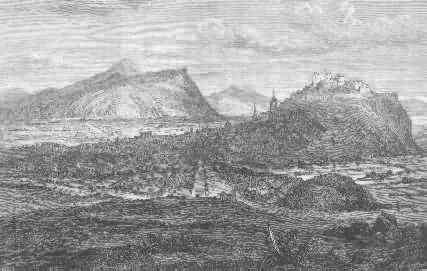|
THE
HISTORY OF LEITH
|
|
|
|
It is an odd fact that when visitors come to Leith they are in a different place from Edinburgh. Somehow, even today, there is a community feeling that just doesn’t exist anywhere else in the city. The reasons for this are many and I will explain this in various articles on this site. The most obvious reason is Leith is a port, the fifth largest in the United Kingdom. The
harbour we see today, was only built up over the past 150 years and
was very much part of Victorian Scotland. Before this when people talked
about the Port of Leith what they were talking about was the Shore.
This would have been the port the ancient tribes
would have known extending from the Broad Wynd to the Tolbooth
Wynd. Edward II would have known it when the Town was used for stores
brought in before Bannockburn. This was the place where Kings and Queens
of Scotland landed. By the time George IV landed in 1822 the Shore was
a trading area full of shipping offices and shops. It was also an area
where many people lived, and where the bad feeling towards Edinburgh
started. The
reason for this goes back to the Middle Ages and was connected to the
rise of the Scottish Burghs and the development of a mercantile class
or Burgesses. This ill feeling is made clear in James Grants Old
and New Edinburgh”. He states We find Vice Admiral Sir William
Monson, a distinguished English Officer who served with Raleigh in Elizabeth’s
reign and in many ships during the reign of James VI (I) and survived
until the time of Charles I urging in his Naval tracts” that
Leith should be made the Capital of Scotland. He wrote Instead
of Edinburgh, which is the supreme city and now made the head of Justice,
whither all men resort as the only spring that waters the Kingdom. I
wish his Majesty did fortify, strengthen and make impregnable, the town
of Leith and there to settle the seat of Justice and all other privileges
Edinburgh enjoys, referring to it the choice of the inhabitants whether
they do or remove to Leith, where they shall enjoy the same liberties
as they did in Edinburgh”. Sir
William explains Leith is a sea port…. convenient for the
transportation and importation of goods, also in times of war Edinburgh
being landlocked could be surrounded and starved into submission, on
the other hand Leith could be supplied by sea”. This did actually
happen during the Siege of Leith in 1560. When the French were supplied
in Leith from the sea. Until Lord Winter and the English navy stopped
it by blockading the port from the sea. Sir
William took a seaman’s view in this suggestion but we can only
imagine the anger of Edinburgh, if it really happened. In a charter of 1558 it states The inhabitants of Lyth (Leith) may on na wyis buy wool, hydes, claith, skin, salmond, wyne, waix, victuellis, or any manner of stapill gudis aucht and sould be brought to the said Burgh as a principal stapill thereof, and there to pack and peill (buy and sell) the samin and pay customs and dewties thairfore”. It
is in statements like those above and there is many like them that start
to give the impression that Leith and Edinburgh did not have the best
of relationships. The reason for this lay in the fact that since the
time of the early Stuart kings and mainly from the time of James I Edinburgh
became a Royal burgh and Leith despite being the Principal port for
Scotland since 1296 was a unfree Town (i.e. it has no rights itself).
Because of this Edinburgh could gradually buy Leith. Also by using their
trade monopoly they had obtained the Shore prior to the reign of Alexander
III, Newhaven in 1510, South Leith in 1567, North Leith in 1639, the
Citadel in 1663, the Calton Barony in 1724. In fact the only part of
Leith, Edinburgh they never got was the was the Barony of St Anthony,
which included the Foot of Leith Walk to Yardheads So the origins of this feeling of distrust between Leith and Edinburgh lay in the trade monopolies held by Royal Burghs. No Leither could go into foreign trade that was a right of Edinburgh. The reason we have a burgess Close on the Shore is to mark the area where the Edinburgh Burgesses had their offices. Even after the battle of Dunbar in 1650, General Lambert who took Leith. Took the complaints of Leith and the English families who lived in Leith to Edinburgh, when he realised all the restrictions on trade in Leith but Edinburgh was so greedy, grasping, and insensitive, that he got nowhere. This feeling towards Edinburgh still exists to this day. |
|
|
|
